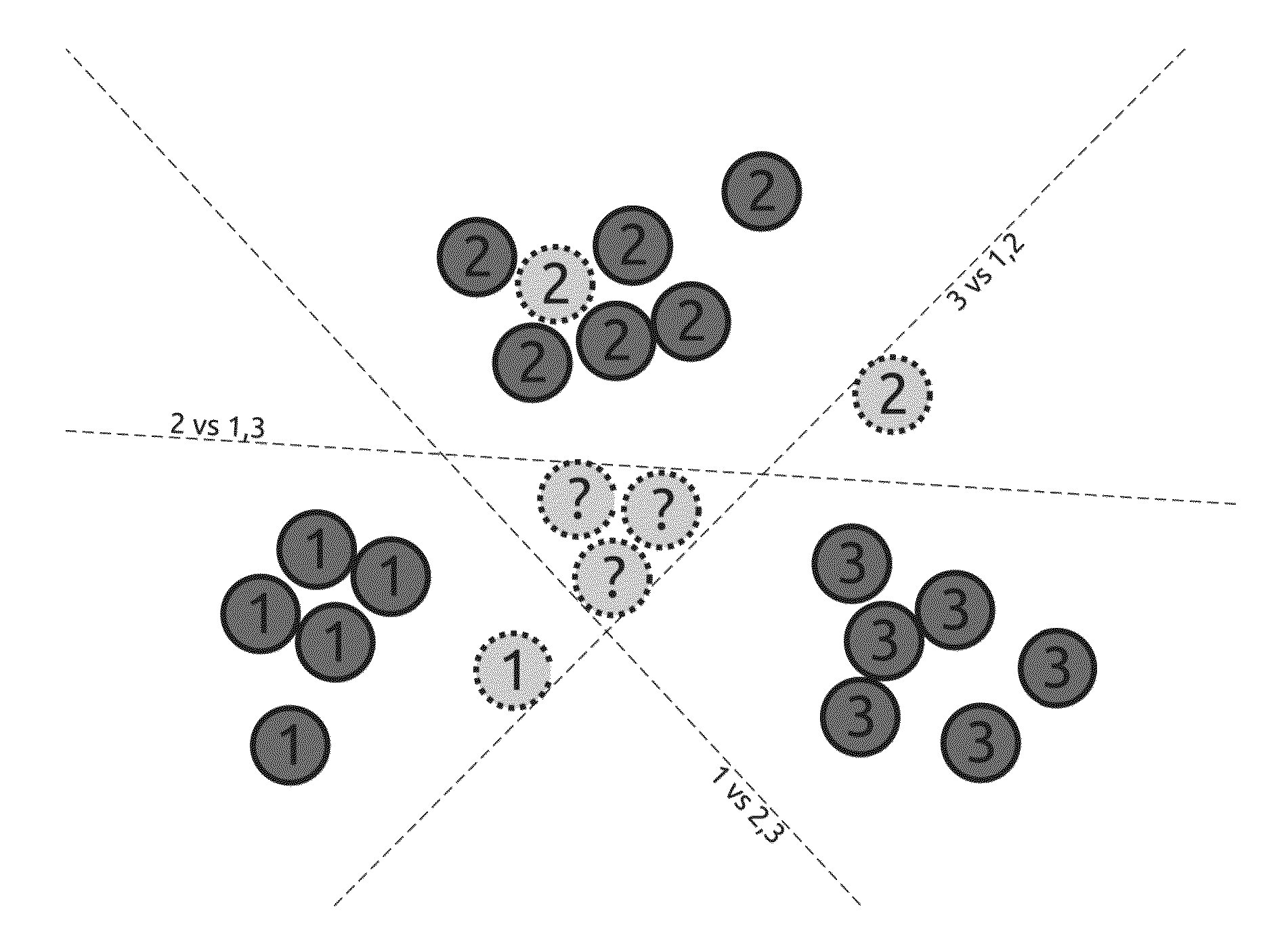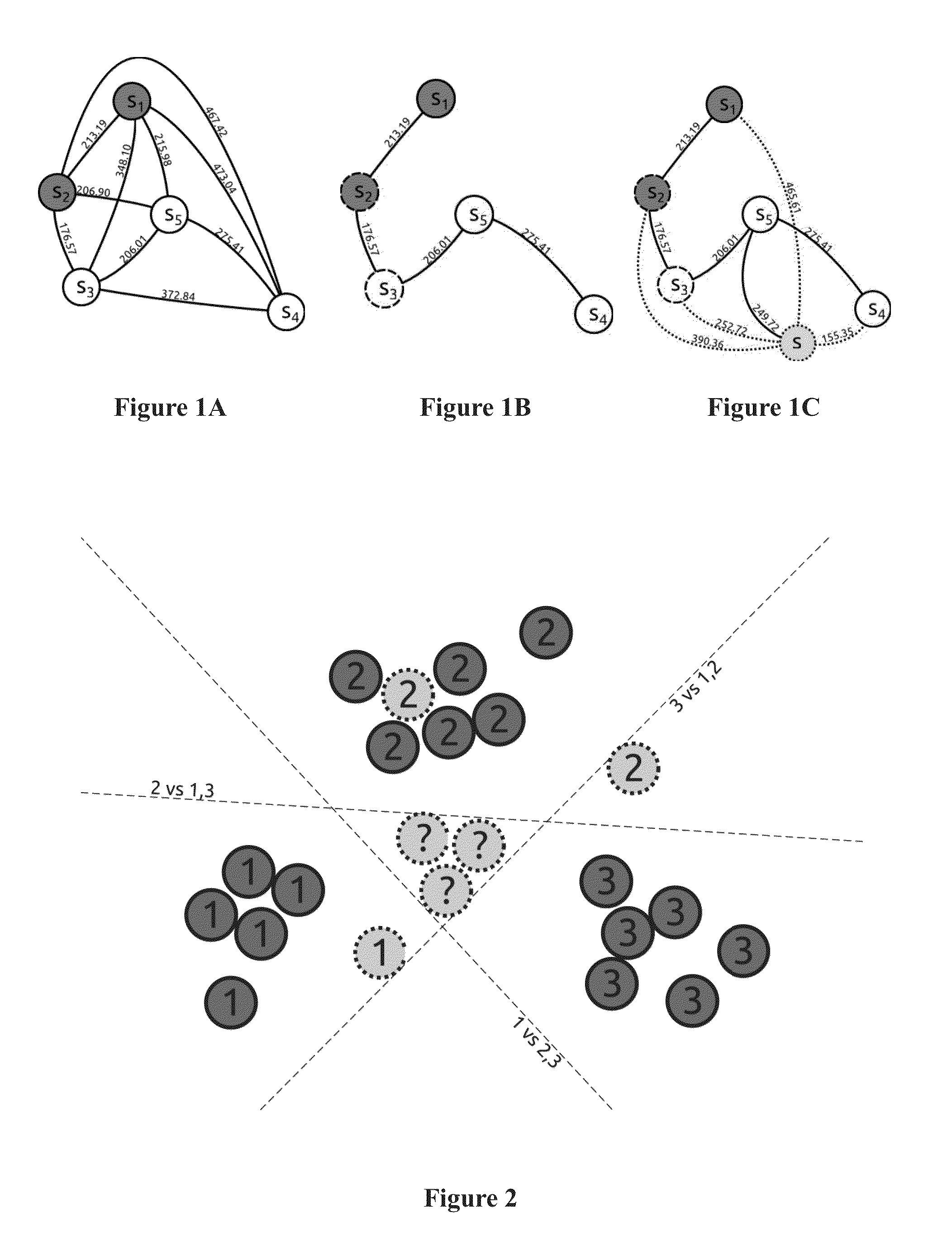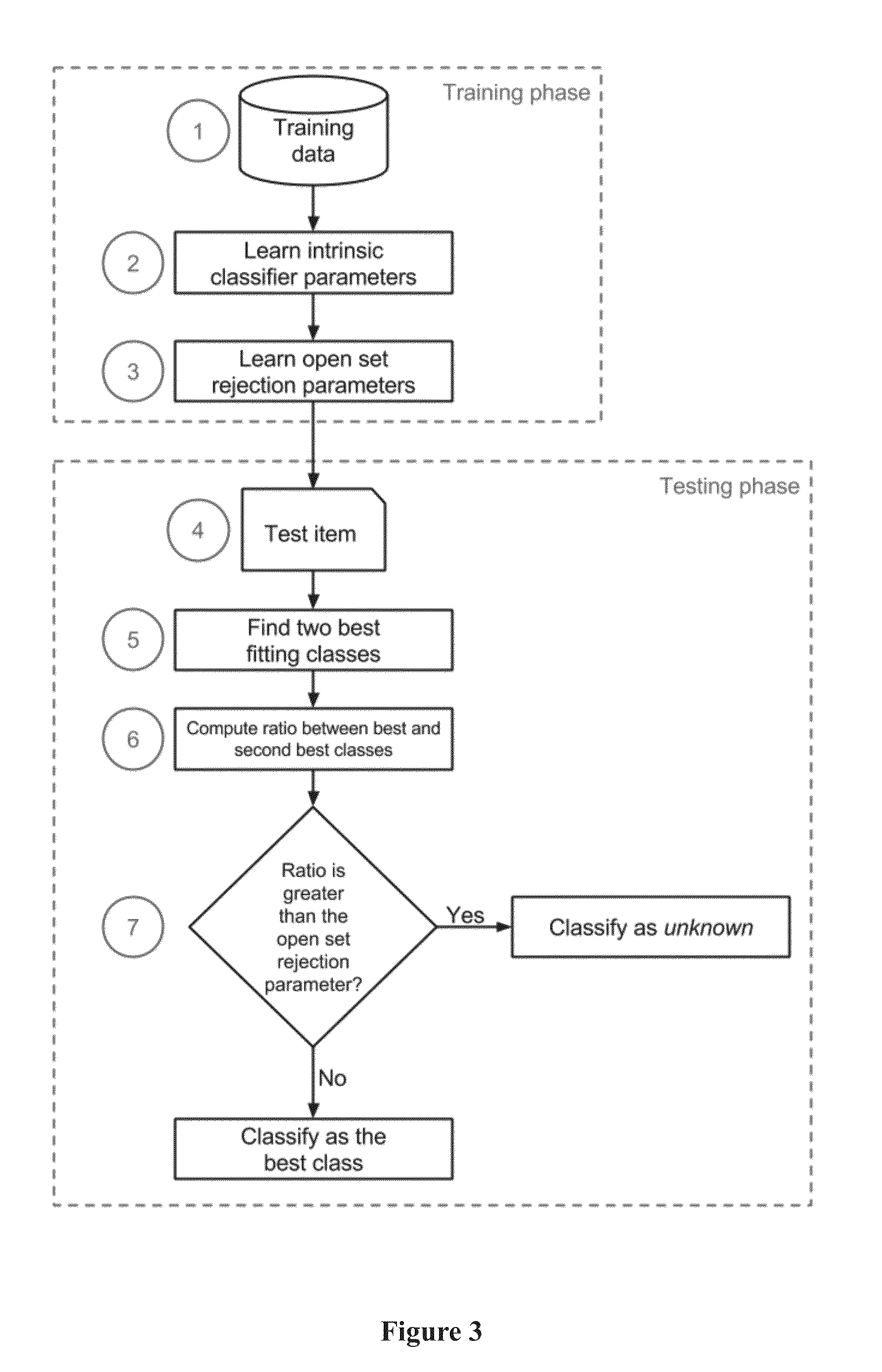Method for multiclass classification in open-set scenarios and uses thereof
- Summary
- Abstract
- Description
- Claims
- Application Information
AI Technical Summary
Benefits of technology
Problems solved by technology
Method used
Image
Examples
experiment 1
Effectiveness of the Method in Open-Set Scenario
[0090]In order to observe effectiveness and accuracy of the proposed method in the present invention, it was compared to the following methods known in the prior art: OPF, multiclass SVM with One-vs-All approach (MCSVM), and the multiclass SVMDBC (Costa et al., 2012) with One-vs-All approach (MCSVMDBC) and 1-vs-Set multiclass Machine (Scheirer et al. 2013) with One-vs-All approach, ranging from the less opened scenario to the most opened scenario possible. Six datasets known in the prior art were used in the experiments: Caltech-256, ALOI, Auslan, 15-Scene, letter and ukbench. Those datasets represent applications of object recognition (Caltech-256, ALOI, ukbench), scene recognition (15-Scene), sign language recognition (Auslan), and letter image recognition (letter).
[0091]Experiments on all these datasets were performed supposing access to a number of 3, 6, 9, and 12 classes among the total number of classes of each dataset. For each ...
experiment 2
Decision Boundaries
[0093]Aiming to understand the different behavior of the classifiers, tests were performed on 2-dimensional synthetic datasets for a visualization purpose. It was used the following datasets, already known in the prior art: Cone-torus, Four-gauss, and R15 datasets. The classifiers were trained using all samples of the dataset to plot the decision boundaries for each class. The decision boundary of a class defines the region in which an eventual test sample will be classified as belonging to the class defining the region.
[0094]FIGS. 7, 8 and 9 show the results of experiment 2-decision boundaries for the Cone-torus, Four-gauss, and R15 datasets, respectively. FIGS. 7E, 8E and 9E show results of decision boundaries using the proposed method. FIGS. 7A, 8A and 9A represent results of decision boundaries' experiment using the OPF method. FIGS. 7B, 8B and 9B represent results of decision boundaries using the MCSVM method. FIGS. 7C, 8C and 9C represent results of decision...
experiment 3
The Known-Unknown Curve
[0096]For a better understanding of the impact of the threshold T (rejection parameter) of the proposed method, experiments were performed supposing five available classes for each dataset (Caltech-256, ALOI, Auslan, 15-Scene, letter and ukbench), ranging T from 0.0 (all samples are classified as unknown) to 1.0 (no sample is classified as unknown) stepping by 0.005.
[0097]FIGS. 10A-10F present the results of this experiment for each dataset, with is a graph of known-unknown curves that show the counterbalance between the accuracy of known samples (x-axis) and the accuracy of unknown samples (y-axis). The crossed point in the curve indicates the point with the best normalized accuracy.
[0098]According to the known-unknown curves of all datasets, it is possible to observe that the proposed method is well-behaved by parameter changing, i.e., a reasonable T (parameter rejection) estimation ensures a feasible open-set classifier for usage in an operational scenario....
PUM
 Login to View More
Login to View More Abstract
Description
Claims
Application Information
 Login to View More
Login to View More - R&D
- Intellectual Property
- Life Sciences
- Materials
- Tech Scout
- Unparalleled Data Quality
- Higher Quality Content
- 60% Fewer Hallucinations
Browse by: Latest US Patents, China's latest patents, Technical Efficacy Thesaurus, Application Domain, Technology Topic, Popular Technical Reports.
© 2025 PatSnap. All rights reserved.Legal|Privacy policy|Modern Slavery Act Transparency Statement|Sitemap|About US| Contact US: help@patsnap.com



